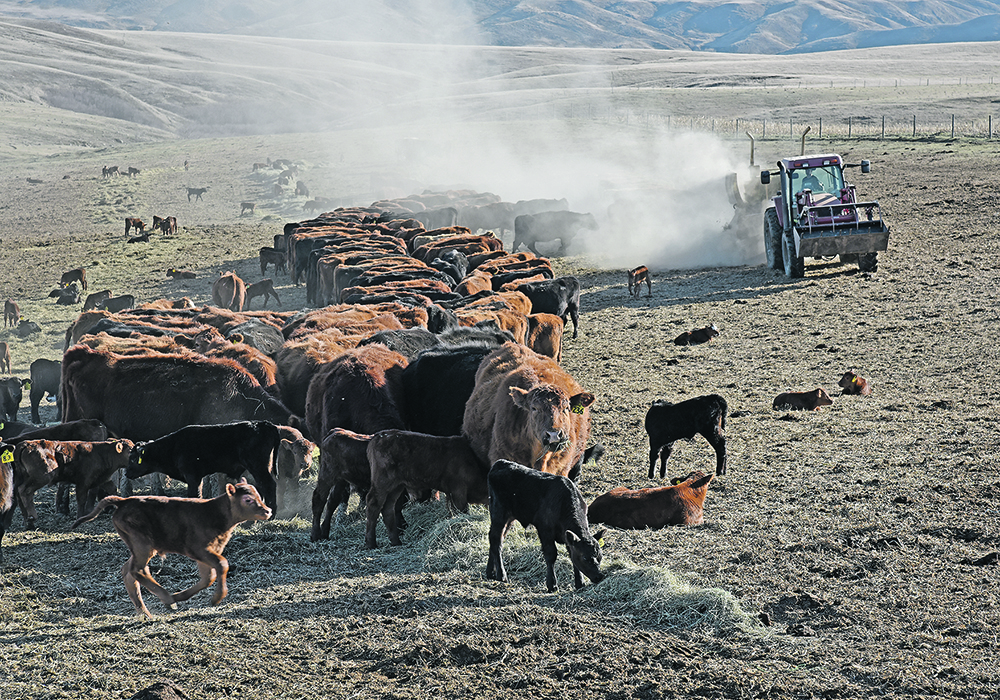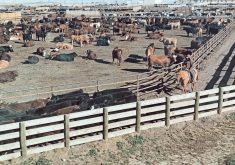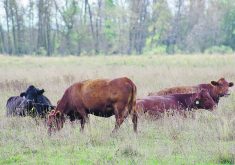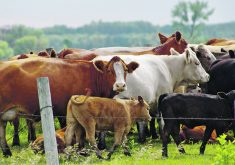Researchers are looking at adding some oils to alfalfa genetics, bringing down methane releases in cattle
Scientists with Agriculture Canada conducted an experiment, where they added sunflower oil to the diets of Angus heifers.
They wanted to know if the sunflower oil would reduce methane emissions from the heifers and it turned out that the answer was “yes”. A small amount of sunflower oil reduced methane by 15 percent.
“We concluded that adding about three percent lipid to high-forage diets… decreases methane emissions and could have substantial effects on methane inventories if implemented commercially,” wrote Karen Beauchemin, an Ag Canada scientist in Lethbridge back in 2007.
Beauchemin, who is now retired, was ahead of the curve on cattle and methane.
Greenhouse gas emissions from cattle, mostly methane, has become a massive challenge for the beef and dairy industries.
Methane accounts for about 20 percent of global greenhouse gas emissions, the United States Environmental Protection Agency says on its website.
It’s estimated that methane from livestock represent about 30 to 33 percent of all the methane produced on earth.
Because of those numbers and the western obsession with climate change, thousands of environmental groups, journalists and social media influencers are urging the public to eat less beef and dairy.
If millions of consumers abandon meat and milk, the world’s livestock herd would shrink and methane emissions would decline, they have argued.
“Eating Less Red Meat Is Something Individuals Can Do to Help the Climate Crisis,” wrote Scientific American in January.
Given the media coverage, the related political pressure and the risk of harsh regulations, cattle producers and the livestock industry are desperate for proven and pragmatic ways to cut methane emissions.
Adding sunflower oil to feed may reduce methane from cattle, but it’s not effective if producers can’t afford to do it. Sunflower oil is not cheap and including it in the ration of thousands of feedlot cattle would be pricey.
As well, millions of cattle are fed on farms in Canada, through practices like bale grazing. How would a producer add sunflower oil to the diet of a heifer that spends the winter grazing on bales of alfalfa and grass?
Given the cost and logistical issues, an Ag Canada scientist is studying a different way to add vegetable oil to the diet of beef and dairy cattle.
Stacy Singer wants to design an alfalfa plant that has vegetable oil in its leaves and shoots.
“All plants contain some (amount) of lipids (oils)… it’s really low typically in the green tissues,” Singer said from her office in Lethbridge. “We’re trying to increase that (oil) in the green part of alfalfa.”

Singer is forage biotechnologist, meaning she’s an expert in the genetics of forage crops. She said there are certain genes in alfalfa that prevent the accumulation of lipids in the tissues of alfalfa plants.
“We call them negative regulators. So, they negatively impact oil accumulation in the leaves and stems.”
Genetic modification is one way to put more lipids into alfalfa plants. More than a decade ago, scientists at Thomas Jefferson University in Philadelphia created genetically modified tobacco plants with high levels of oil, with the idea of using the tobacco for biofuel production.
Singer is using gene editing to control the negative regulators, which prevent the alfalfa from accumulating oil in the leaves and shoots.
“We do have some edited alfalfa plants. And we have carried out some preliminary assessment of oil content in their shoots,” she said. “In at least one case, we do see a significant increase in oil content in the green parts of alfalfa…. It does look promising.”
A gene-edited alfalfa might have more lipids in the leaves and cattle that eat the alfalfa might emit less methane. But the bigger challenge is getting such a variety to market.
Why would producers pay for an alfalfa variety that results in less methane?
Singer explained the gene-edited alfalfa would be crossed with a proven and commercial variety of alfalfa. The product of the genetic cross would need all the desirable traits that livestock producers need — high yield, drought tolerance, high forage quality, pest resistance — and have the added benefit of lipids in the leaves.
Singer is now working with Ag Canada plant breeders, to develop such an alfalfa. Then, it would require years of field testing to prove that the alfalfa performs as expected.
But it could be worth the effort. Cattle producers need to show consumers that they are making progress on emissions.
“Public perception of… red meat production is not great right now because of the methane emissions, mainly,” Singer said. “If producers could do something to reduce that, it would help them as well.”
















